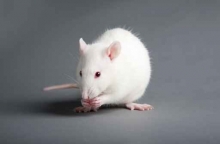Cutting edge research about the effect of drugs on the brain
Submitted by Wilson Gonzalez-Espada on

Two teams of Puerto Rican researchers from UPR Rio Piedras and Medical Science Campus published their findings the same month.
One of the studies explored the role of synthetic testosterone on adolescent rats:
Abstract: The illicit use of anabolic androgenic steroids (AAS) has gained popularity among adolescents in the last decade. However, although it is known that exposure to AAS impairs cognition in adult animal models, the cognitive effects during adolescence remain undetermined. An inhibitory avoidance task (IAT) was used to assess the effect of AAS (17α-methyltestosterone; 17α-meT-7.5mg/kg) in male and female periadolescent rats. A single injection of 17α-meT immediately before the footshock produced significant impairment of inhibitory avoidance learning in males but not females. Generalized anxiety, locomotion, and risk assessment behaviors (RAB) were not affected. Our results show that exposure to a single pharmacological dose of 17α-meT during periadolescence exerts sex-specific cognitive effects without affecting anxiety. Thus, disruption of the hormonal milieu during this early developmental period might have negative impact on learning and memory.
The second study explored ways to block the association of a place with cocaine craving using The metabotropic glutamate receptor 5.
Abstract: The metabotropic glutamate receptors 5 (mGluRs5) within the Nucleus Accumbens (NAc) have been implicated in the modulation of psychostimulant reward. We hypothesized that blockade of mGluR5 within the NAc shell would impair cocaine conditioning in rats. For this study, animals were implanted with cannulae within the NAc shell, and separate groups were exposed to a multimodal environment within activity chambers that signaled cocaine (cocaine-paired) or saline (controls, cocaine-unpaired) injections. Prior to placing the animals in the chambers, rats received systemic intraperitoneal injections of saline or cocaine for 10 consecutive sessions. In the test session (D12), animals were exposed to the multimodal environment without any cocaine or saline pre-treatment. Before placing the rats in the chambers, separate groups of animals were infused within the NAc shell with 2.5, 12 or 25 nmol/0.5 μl/side of 2-methyl-6-(phenylethynyl) pyridine (MPEP), an antagonist of mGluR5 or with vehicle. Blockade of the mGluR5 subtype at a 2.5 nmol dose showed no significant difference in either the ambulatory distance (AD) or the vertical plane move time (VPT). In contrast, mGluR5 blockade at 12 nmol and 25 nmol decreased conditioned locomotion in the cocaine-paired groups. An association of the environmental cues with the effects of cocaine implies the involvement of memory process during the conditioning response. Our results suggest that mGluR5 within the NAc shell could be modulating the expression of memory related to the association of environmental cues with the effects of cocaine. We suggest that mGluR5 could be taking into account to further studies related with cocaine exposure and cocaine addiction treatments.
Bibliography:
Martínez-Rivera, A., Rodríguez-Borrero, E., Matías-Alemán, M., Montalvo-Acevedo, A., Guerrero-Figuereo, K., Febo-Rodríguez, L., Morales-Rivera, A., and Maldonado-Vlaar, C. (2013). Metabotropic glutamate receptor 5 within nucleus accumbens shell modulates environment-elicited cocaine conditioning expression. Pharmacology Biochemistry and Behavior, volume 110, pages 154-160.
Ramos-Pratts, K., Rosa-González, D., Pérez-Acevedo, N., Cintrón-López, D., and Barreto-Estrada, J. (2013). Sex-specific effect of the anabolic steroid, 17α-methyltestosterone, on inhibitory avoidance learning in periadolescent rats. Behavioural Processes, volume 99, pages 73-80.







